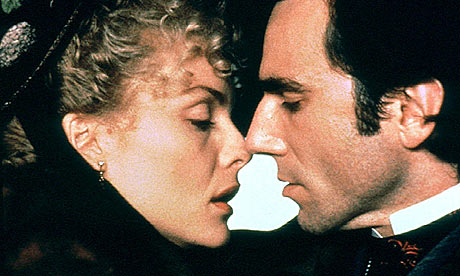According to Bordwell & Thompson, style refers to the distinctive patterns of technique found in a film, which shape the effects the movie has on its viewer.
Style can refer to the style of a film, a director’s particular style, or the style of a group of films or directors. Importantly, style is created through the choices of the director, which can be shaped by limiting factors such as technology, fashion, dominant trends or stylistic norms.
The Age of Innocence, by director Martin Scorsese, features sound as a key part of its style. The film features omniscient non-diegetic narration throughout, which provide the viewer with key information about the plot and characters. Also, the recurring orchestral score ties together the film, as it provides both emotional cues for the audience and is relevant to the setting, especially in the opening ballroom scene. Sound also directs the audience toward important dialogue, such as in the scene where Newland and the Countess whisper to each other as the opera. The volume of the other characters conversation and the background music fades away so we can only hear the two characters speaking, thus reflecting the intimacy of their conversation – they are focused only on each other, just as the audience is focused only on them.
The mise en scene, particularly the costumes and settings, reflect the film’s 1870s setting, a pattern which continues throughout the film. Similarly, the editing is reflective of the film’s style, such as the fade out to blocks of colour, yellow, red and eventually white in crucial scenes. The editing also reveals Newland’s point of view, as by rapidly cutting between detail shots, we get the sense that he is observing his environment carefully, and we get to see what notices. This is repeated throughout, thus creating a pattern with this style of editing.
Moreover, masking focuses the audiences attention, such as in the scene where the engagement ring is displayed, where everything in the shot is masked out except the ring. This technique is relatively uncommon in Hollywood narrative film’s, so it stands out as being reflective of The Age of Innocence’s unique style.
